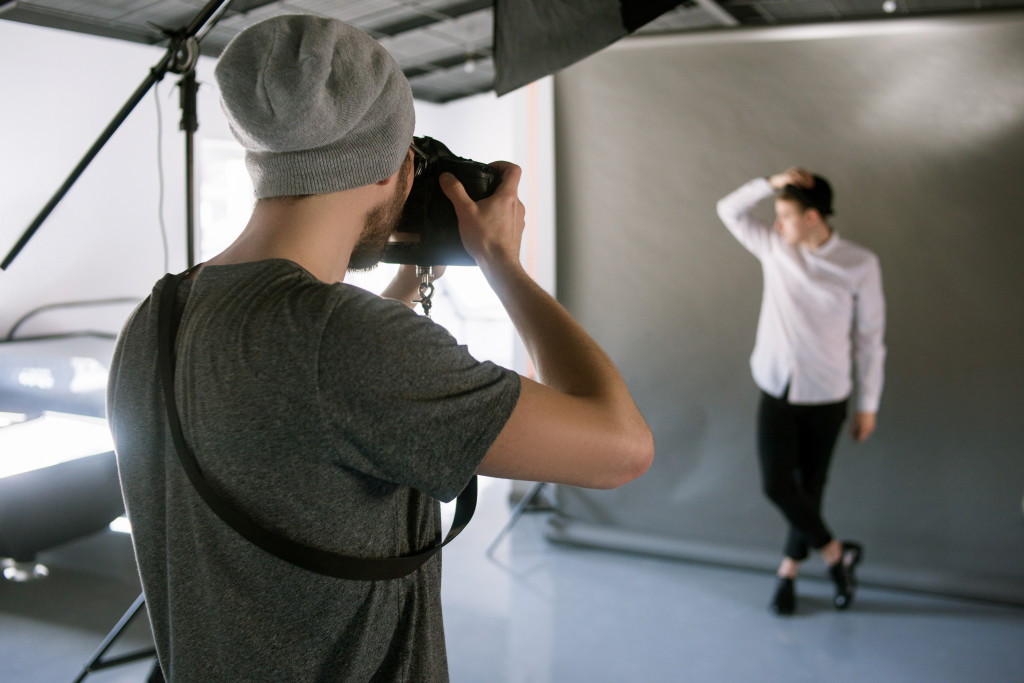Fashion photography yields impressive results, allowing artists and photographers to execute their most creative ideas. But it also takes a lot of hard work behind the scenes. Besides putting together a talented and well-equipped team to work with you, it would help if you also had a comprehensive storyline and plan of how you want the shoot to go.
What is pre-production?
Pre-production is like work before the actual work. It’s the process of extensively laying out the details of each piece of clothing, the styling, set pieces, and the necessary gear. Every excellent production set has hours of pre-production behind it.
There’s a lot that goes into fashion photography, and photographers are under a lot of pressure to deliver in these shoots. They said the end result is the most important and while that is true to a certain extent, the pre-production period that goes into such a shoot also makes it so unique and successful.
Creating a pre-production checklist can help your project get off to a good start and allows you to stay on track to achieve your goals. You will have the time to pace yourself, schedule accordingly, and communicate the ideas and desired outcomes with your team to ensure a satisfied client by the end of the shoot.
Filming abroad?
If you are filming abroad, the first step would be to get a film production fixer to help you execute your vision. Their main tasks are to provide logistical assistance, facilitate visas, location management, talent selection, crew sourcing, equipment procurement, lodging, and transportation arrangements. Think wedding planner but in a production space.
Fixers are extremely helpful if you are working on international productions because they are more knowledgeable on local culture, language, laws, and even the best locations you can use for your production. Because of this, they can also work around your budget constraints and help you get the products and services you need at affordable prices.
Pre-production checklist

Client Meetings
Set up client meetings and let them lay it all out on the table. Talk to your clients about what message they want to convey, what kind of products or services they wish to advertise, and how they want the overall look to be like.
These meetings are crucial and involve extensive preparation on your part. It would be best if you had a firm grasp on the budget, the amount of time needed for shooting, the models, and other factors required for the shoot. You can also suggest shoot locations, designers, and equipment.
Budget Properly
Clients love a good deal, and they usually have advertising budgets allocated for the year. So if you can show that you can fit this budget and still produce the expected results, the better. You mustn’t sacrifice your creative vision. Be resourceful and prepared for any last-minute changes.
When budgeting, you have to be familiar with everything you need to consider, such as the make-up artists, equipment, the clothes to be used, stylists, transportation, accommodations, and the like.
Design your plan
You can make a mood board with some inspiration for you for when you get started. You can get photos online and read up on past shoots of similar nature. Doing your research will also help you put your unique twist to the shoot and do something no one else has done before. Throughout this process, remember to keep your vision and your client’s vision aligned.
Things to Do
Create a to-do list for the things you have to do before and during the shoot. On the day of the shoot, you’ll be extremely busy, so you won’t have time to make that list right then and there. Mental checklists are also unreliable because stress will make it more likely for you to forget a thing or two. Make you’ve prepared everything ahead of time.
Choose your location
You may think that you can easily manipulate locations, but choosing the perfect place is vital to your production. Please take photos of possible locations and note the lighting, noise, foot traffic, and the rest of its environment. Take note of any potential hazards or threats to the clothes, equipment, models, and crew.
Build your team
Having a reliable team is crucial to the success of the project. Make sure you have a group of people you can count on to complete their tasks, wear multiple hats, and assist you in whatever way they can. Let them know what their duties are from the very beginning and tell them what they should expect so the entire team knows what they’re responsible for and how they can help other departments.
Plan a dry run
Never skip a dry run because it allows you to test everything you have planned and make last-minute changes. It can show you loopholes in your design and any logistical concerns you may not have noticed before. Having a proper run-through with your team ensures that everything goes smoothly the next day.
A lot of work goes into making fashion photography as good as it sounds. The pre-production process may feel overwhelming, but the outcome makes the work worth it. Your attitude can largely influence the turn of events on the day itself, so be prepared and make sure you have everything you need for a successful shoot!

